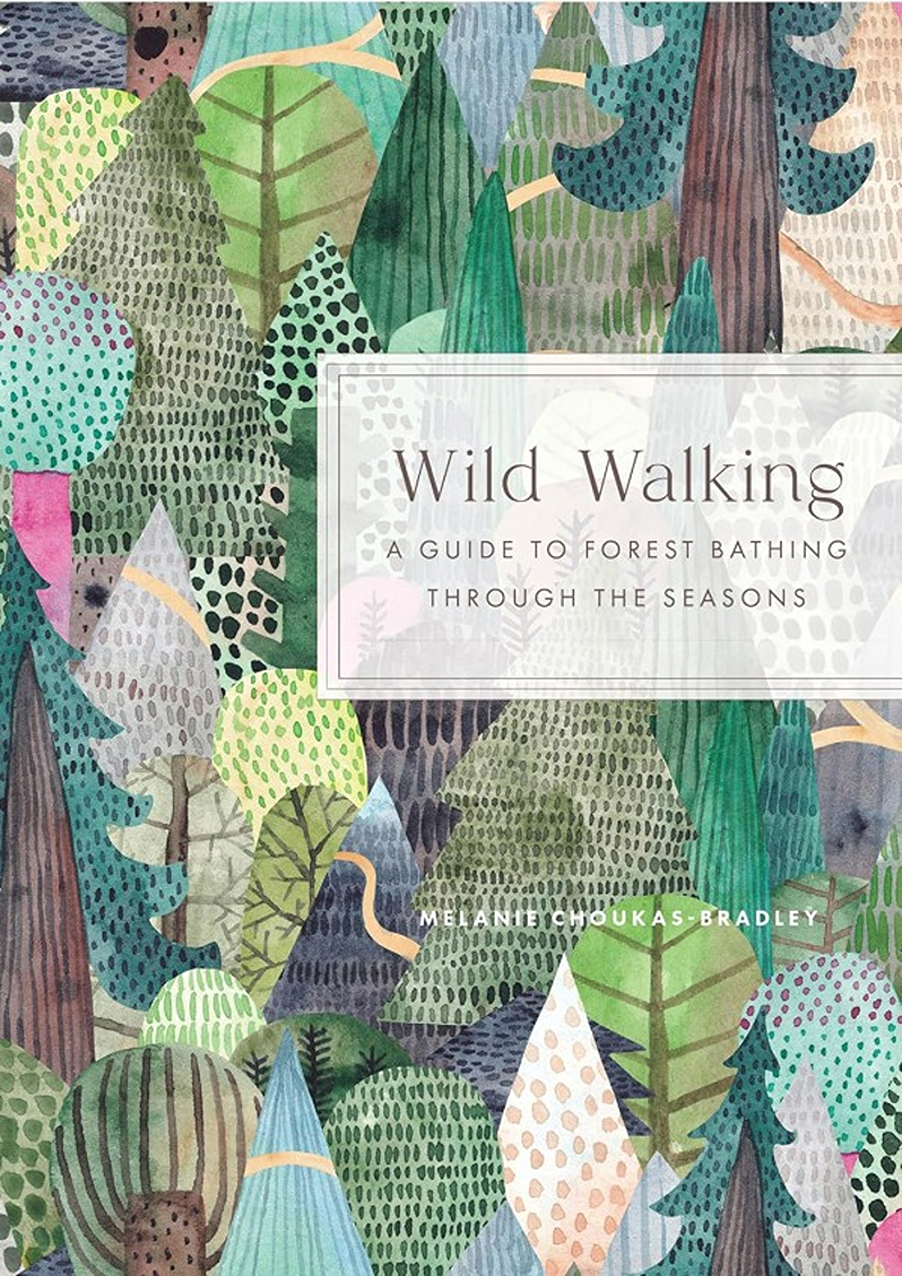Why Linen is a Sustainable Fabric Choice
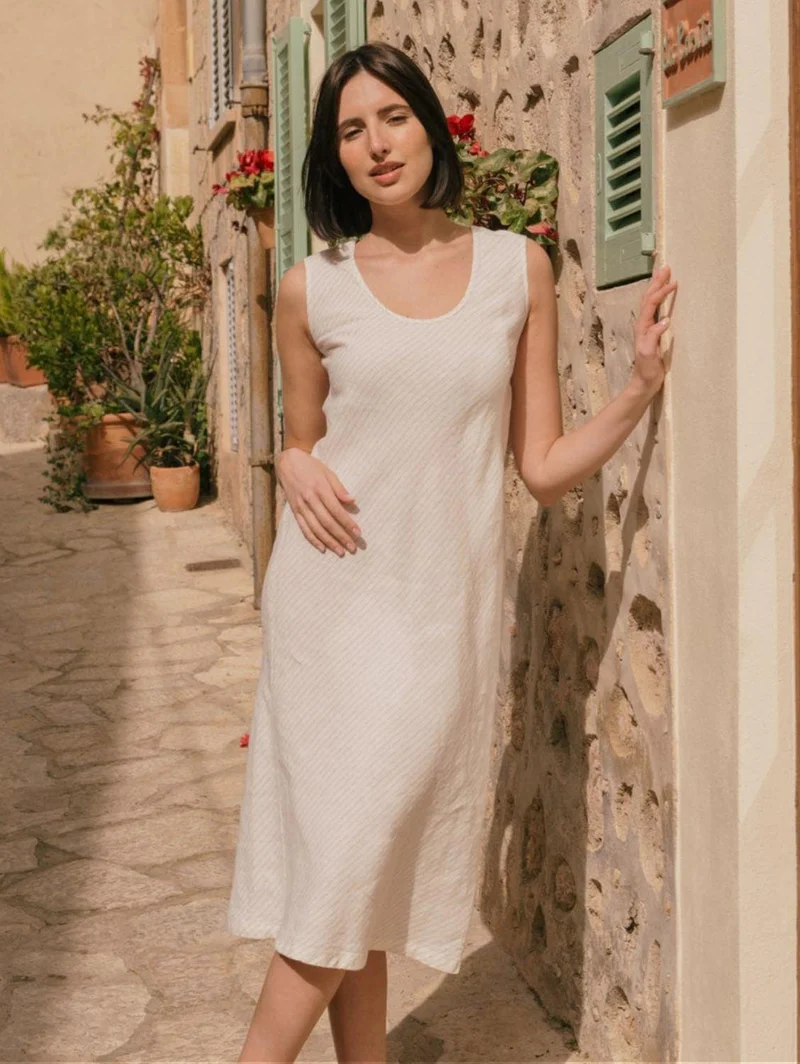
Linen has a long history in wardrobes around the world, and it’s making an impressive comeback for all the right reasons. If you’re interested in sustainability and want your clothes or home textiles to be lighter on the planet, linen stands out as a strong pick.
Here are the top reasons linen earns its reputation as a sustainable fabric choice, with each point showing how this classic fibre supports both people and the earth.
Uses Less Water Than Cotton
Linen is derived from the flax plant, which needs far less water to grow than cotton. In most climates, flax only needs rainfall, while cotton fields usually demand extra irrigation.
This puts much less strain on local water supplies and cuts down on pollution from runoff. With water scarcity growing more common, fabrics that sip rather than gulp water are a welcome relief.
Grows with Little or No Chemicals
Flax grows well in poor soil and isn’t very picky about conditions, so it rarely needs pesticides or fertilisers. Fewer chemicals entering the soil means fewer threats to wildlife, farm workers, and nearby communities.
That’s a big win for health and the environment. Many linen producers can even meet certified organic standards.
Linen is Fully Biodegradable
When linen clothes or home textiles reach the end of their life, they break down quickly in soil, returning to nature without leaving harmful residues behind.
Unlike synthetic fabrics, which stick around for centuries, pure linen disappears in months under the right conditions. Composting old linen garments is as easy as adding them to your garden waste.
Durable and Long-Wearing
Linen is known for being tough. Good quality linen sheets, shirts, or tablecloths can last for decades if looked after properly. Each wash makes the fabric softer without weakening the fibres.
Long lifespan means you buy less often, which reduces waste and the need for constant replacement. Longevity is a cornerstone of sustainable fashion.
Every Part of the Flax Plant Gets Used
Nothing goes to waste with flax. Fibre from the stems becomes linen, while seeds and by-products can be turned into food, oil, or animal feed.
Some leftovers help make paper or building supplies. This closed-loop system means fewer raw materials are wasted and boosts sustainability from field to fabric.
Low-Impact Processing
Turning flax into linen uses mechanical methods like retting, spinning, and weaving, which are less polluting than the harsh chemical methods used for other fabrics.
The overall process creates less hazardous waste and demands less energy, lowering the carbon footprint from farm to finished product.
Naturally Breathable and Antibacterial
Linen’s natural breathability and moisture-wicking qualities keep you cool and dry without needing chemical treatments.
Linen resists bacteria and fungus, so it stays fresh longer and doesn’t hold on to smells. You also wash it less often, saving even more water and energy over time.
Supports Local and Traditional Farming
Linen is still grown widely in Europe and parts of Asia using local knowledge and traditional techniques. Many small farmers grow flax as a rotation crop, which helps boost soil health for future crops and supports rural communities.
Buying European or locally produced linen helps sustain these farming traditions and keeps money flowing into smaller economies.
Cool in Summer, Warm in Winter

This pretty linen summer dress is made from eco-friendly linen. And made to order (time around 2 weeks) to avoid fabric waste.
One of linen’s superpowers is its breathability. The fibres let air move through easily, keeping you cool even on the hottest days. Sweat absorbs and dries fast, so you feel fresh and dry longer.
Surprisingly, linen is just as helpful in winter. Its natural hollow fibres trap warm air, so you stay cosy even when it’s cold outside. Linen’s ability to adjust to your temperature means you can layer it from season to season, stretching your wardrobe and cutting waste over time.
No Microplastics in the Wash
Synthetic fabrics like polyester and nylon shed tiny plastic fibres, every time you wash them. These microplastics slip through filters and end up in rivers and oceans, where they harm wildlife and sneak back into the food chain.
Elegant Linen Clothing from Lithuania

Amour Linen is a quality brand of linen clothing, from our friends in Lithuania. And unlike cotton, it doesn’t cling to your body, so no static electricity!
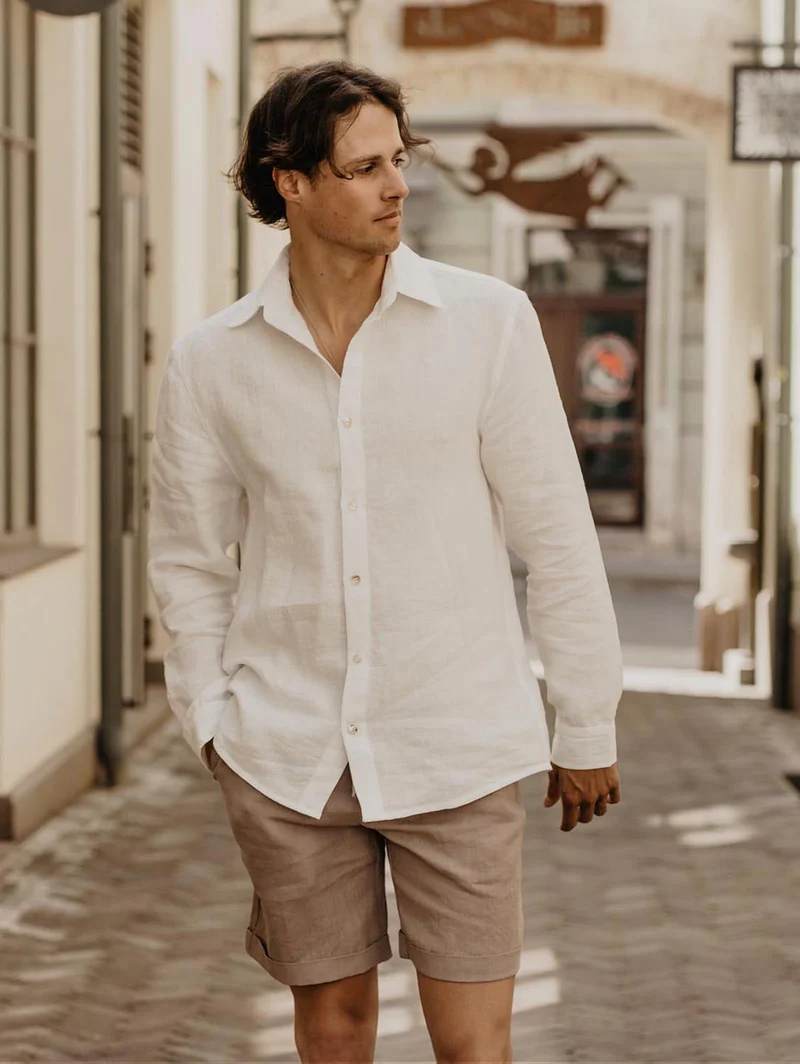
All the linen is locally sourced and the dying factory is nearby too. Everything is made by a team of in-house seamstresses. Any leftovers are made into other products, and all items are sent in zero waste packaging.
Where is Lithuania?
You will find that linen clothing often is from Lithuania, a Baltic state in eastern Europe, and home to one of the world’s oldest languages (related to Sanskrit, which is used to chant mantras in India).
It’s home to The Stelmuze, the oldest tree in Europe – an oak. Not surprising, considering one third of this beautiful country is entirely forest.
Wavy Linen Clothing (also from Lithuania)

Wavy Linen is a quality family-run brand of linen clothing from Lithuania, run by a pattern cutter, with everything expertly-made to Fair Trade principles, and sent out in compostable packaging.
Leftover fabrics are turned into pattern swatches, to send out to customers, rather than go to waste.
The range includes comfortable summer hats, plus pretty blouses and skirts, along with elegant summer dresses and jackets.
A Sleeveless Linen Dress (with pockets)
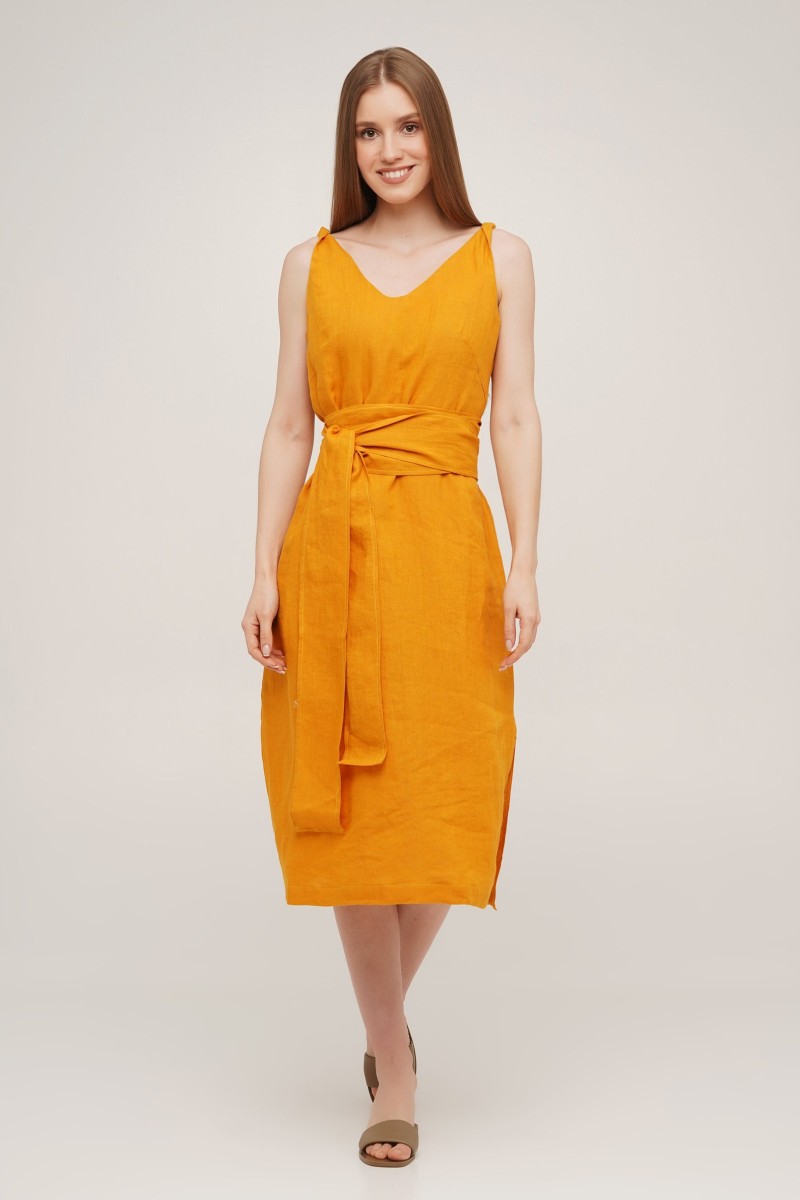
This sleeveless linen dress is made from 100% organic linen. A lovely way to display your ‘low fashion miles’ on a summer day.
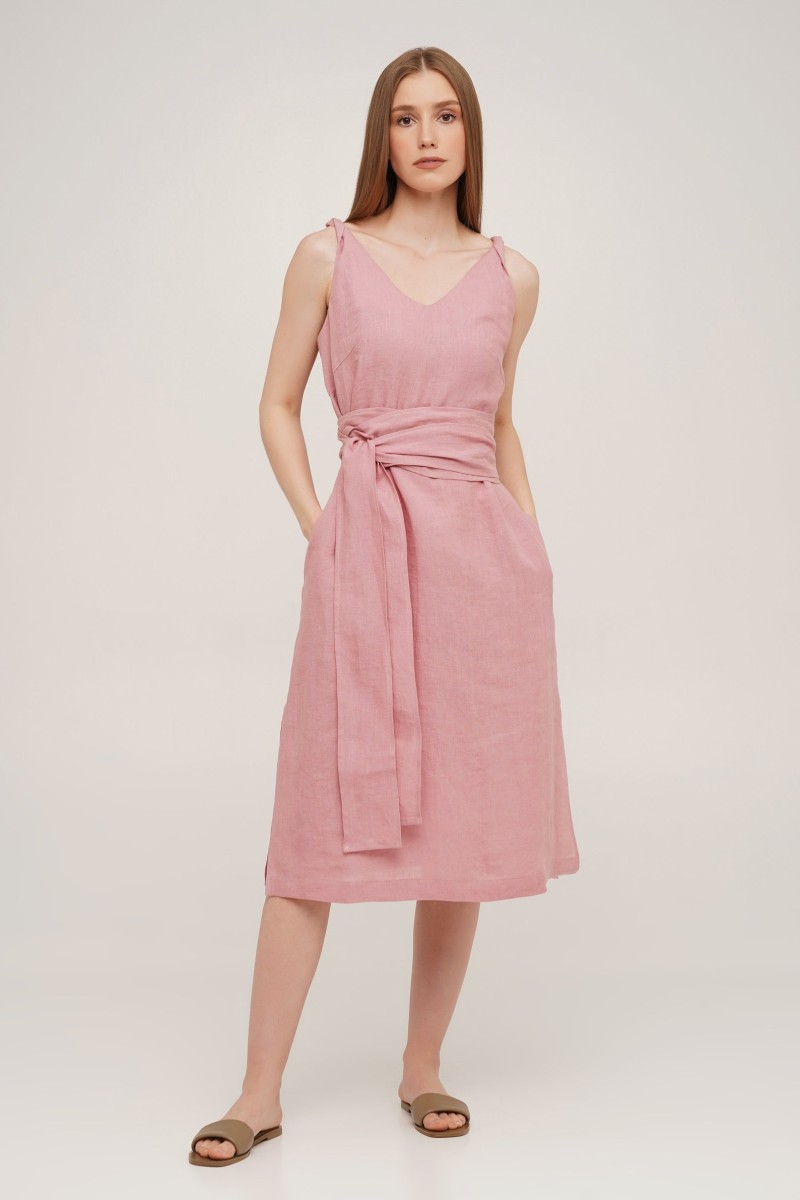
Available in several colours and sizes, this stonewashed linen dress is perfect for summer, with a wide belt (or wear without, for a relaxed flowing fit).
The dress features hidden pockets on each side, and the lightweight breathable material makes it comfortable on hot days.



